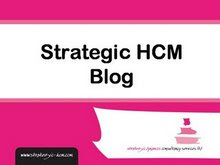
The main workplace design speaker was Simon Ward from Cushman & Wakefield. His main point was that smartworking isn’t about space – it’s about people and work.
He talked about some of his Corporate Real Estate (CRE) experience taking down offices and implementing open plan, touchdowns for travellers, collaboration spaces etc and noted that collaboration and business social interaction was a common factor within many of these experiences.
Integrated approaches
John had suggested that since no one function has got the full picture of smartworking, including the property market, use of technology etc, we need to bring the different facets of its design together.
We talked specifically about HR, with Simon mentioning he wished that HR was at the table more often when smart working was being discussed. GE Heathcare’s HR Leader, Roshni Haywood gave a good general presentation about GE, and some useful insights about change which I may include when I come back this shortly. However I didn’t learn much about smart working.
Measurement
There were some interesting discussions on measurement – Roshni emphasised the need to keep track of everything and make people accountable for meeting their numbers. And Simon suggested that execs want facts and you’ve got to have data – utilisation, security barrier, portfolio data etc. He gave the example of one Head of Risk who wanted to have his full team at head office because ‘they all go there all the time’, but checking the security data showed that only ten in three hundred when into the building more than once a quarter.
OK, fine, but what about tracking smartworking back to the extent of business social collaboration? – I suspect that might be a bit more difficult to do, and that therefore we need to encourage our execs to go beyond facts and data. And in fact, Simon noted in some of the his experiences that identifying the cost savings or smart working was difficult as a lot of these were intertwined with other things. Exactly.
John also noted that when you go home and are asked about your day, you just know – you don’t need to consult an HR scorecard. Plus people can get caught by their own metrics and forget they need to respond, I thought this was a good point.
Outcomes and emergence
I also liked John’s suggestion that we need to be open to emergence: “we don’t know the destination – we’re creating it as we go, and the journey changes the people which changes the destination” (although there are key known issues, such as getting one of those buses when the Olympics is in London next year – but there will be other things as well)
However, I also think we need to have a clear understanding of what smartworking means for us – and plan as much as we can for this outcome to be achieved. I also think we can get a bit more granular than Simon’s suggestion about people being ‘buzzier and happier’.
And I also think taking this approach would avoid the sort of disastrous problem described by Simon where Cisco set up lots of cube work spaces but which resulted in no one talking to each other in the way that was intended. Perhaps this requires CRE to go beyond ‘we’re just here to help’?
I’m hoping to see a bit more of this approach at Workplace Trends on Thursday…
- Consulting - Research - Speaking - Training - Writing
- Strategy - Team development - Web 2.0 - Change
- Contact me to create more value for your business
- jon [dot] ingham [at] social [dash] advantage [dot] com
.



















No comments:
Post a Comment
Please add your comment here (email me your comments if you have trouble and I'll put them up for you)